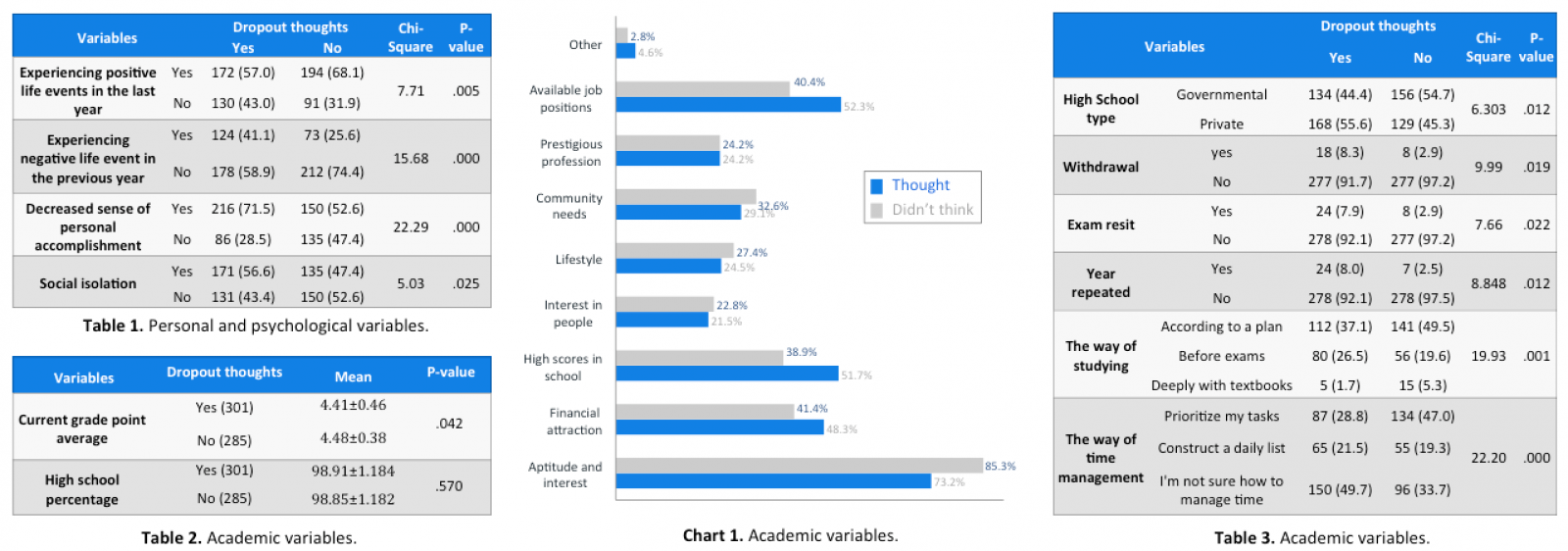


Theme
Best Practices in Student Engagement and Support
INSTITUTION
College of Medicine, King Saud University, Saudi Arabia

Although College of Medicine at King Saud University (KSU) is one of the oldest medical schools in the Middle East, and has very restricted and high-quality students’ selection criteria. Some medical students still think of dropping out. However, We found no local published studies looking deeply into this phenomenon. Therefore, this study was conducted to measure the prevalence and the possible factors associated significantly with the potential thoughts of dropping out among medical students, during the academic year 2016-2017.
A cross-sectional study was conducted among KSU medical students from all academic levels, during the academic year 2016-2017. A self-administered questionnaire was constructed, validated and then distributed electronically via e-mail to all medical students (approximately 1500 students). The students were followed up manually to improve the response rate. Only 587 students returned completed questionnaires, for an overall response rate of 39.13%. the statistical analysis was performed using Statistical Package for the Social Sciences (SPSS) version 22 software. (SPSS Inc., Chicago, IL, USA). We assumed there was a statistically significant difference when P-value less than 0.05 (P < 0.05). Approval from the ethical research committees in KSU College of Medicine in Riyadh, Saudi Arabia was obtained.
The overall response rate was 39.13%. 306 of the students were males and 281 were females. The majority of them were single (98.5%). 92.7% of the students live with their families, and 13.9% have at least one doctor parent. More than half (51.4%) of KSU medical students have thought of withdrawal at least once. Only 25.2% of American medical students in a multi-institutional study reported having thought of withdrawal. The odds of thinking of dropping out among students whose decisions to enter medical school were influenced by the surroundings were 91% more than their peers who decided by their own (OR=1.912,P=0.000). High school passing percentage, aptitude and achievement tests scores as pre-admission criteria failed to signify any relation to dropout thoughts among KSU medical students (P= 0.570, 0.630, 0.828). However, this is not the case in most of the studies where having implemented strict pre-admission criteria decreased the dropout rate dramatically. On the other hand, studying according to a plan and prioritizing tasks in managing time were common characteristics of students who have not had thoughts of withdrawal. Given the p-values 0.001 and 0.000, respectively.

Dropout thoughts prevalence among KSU medical students is very high. Academic struggling is accused as the number one reason behind these attacks of dropout thoughts. Medical Education department at KSU should implement some sort of academic guidance programs. Addressing symptomatic students to help them tackle precipitants of withdrawal thoughts, before actually dropping out.
- Actual dropout among KSU medical students should be obtained.
- Conducting such study in the other Saudi medical schools (governmental and private) is highly recommended.Interviewing students who are already withdrawn is also needed.
- Academic guidance programs should be implemented to detect symptomatic students before actually dropping out.
We would like to thank Dr. Shafi Ahmad and Dr. Tauseef Ahmed our tutors, for their continuous guidance in completing this project.
 Send Email
Send Email